Last updated on: October 7, 2023
Pickleball is one of the fastest growing sports in America with over 4.8 million players. This paddle sport combines elements of tennis, badminton, and ping-pong. Many tennis and badminton players are making the switch to pickleball as they get older since it’s less taxing on the body. However, that doesn’t mean pickleball is completely free of injuries.
Don’t let an injury take you off the court! Follow these tips to play safe and stay in the game.
Most Common Pickleball Injuries
Here are some of the most prevalent injuries in pickleball:
1. Shoulder Injuries
The shoulder joint takes a lot of repetitive stress during pickleball. Serving, overhead smashing, and reactive moves to balls hit close to the body can lead to overuse injuries or tears in the rotator cuff muscles or labrum over time.
2. Elbow Injuries
Elbow issues like tennis elbow are common in racquet sports. The repetitive motion of hitting pickleball groundstrokes can cause tendonitis in the elbow joint.

3. Knee Injuries
The quick side-to-side movements and lunging volleys in pickleball can put strain on the knee joints, meniscus, and ligaments. This is especially true on hard indoor courts. ACL and meniscus tears are not uncommon.
4. Ankle Sprains
Shuffling around the court and abrupt changes in direction make ankle rolls and sprains a frequent occurrence in pickleball.
5. Achilles Tendonitis
The Achilles tendon connects the calf muscles to the heel bone. Repeated jumping for smashes and sprints to get to drop shots can cause inflammation of the Achilles tendon.
6. Lower Back Pain
The asymmetric rotations required during pickleball strokes along with improper bending and lifting techniques can irritate the lower spine and cause pain.

7. Groin Pulls
The groin muscles inner thigh get over-stretched from explosive starts and sudden changes in direction. This can lead to pulls and strains.
8. Tennis Elbow
Repetitive pickleball motions like forehand strokes can put a lot of strain on the elbow’s tendons leading to tennis elbow (lateral epicondylitis).
9. Blisters
Improperly fitted pickleball shoes or grips that don’t absorb sweat well can create friction leading to painful blisters on the feet or hands.
key tips for preventing common pickleball injuries:
| Injury | Prevention Tips |
| Muscle strains | Warm up properly, stretch, build strength, use proper form |
| Tendonitis | Allow rest between play, use braces/sleeves, tape joints |
| Ankle sprains | Tape ankles, wear ankle braces, improve balance |
| Tennis elbow | Wear elbow brace, improve swing form, take breaks |
| Heat exhaustion | Stay hydrated, take shade breaks, wear breathable clothes |
| Shin splints | Wear compression sleeves, stretch calves, consider orthotics |
| Rotator cuff injuries | Improve serving form, strengthen shoulders and back |
Pickleball Injury Prevention Tips
Now let’s go over some tips to help you avoid these common pickleball maladies:
1. Warm Up & Stretch
Spend at least 10 minutes warming up before play. Do some light cardio to elevate your heart rate and break a sweat. Then stretch all your major muscle groups including shoulders, arms, back, legs, and ankles. This increases blood flow and flexibility.
2. Wear Proper Footwear
Cushioned cross training or court shoes with good lateral support are ideal for pickleball. Make sure to break them in before play. Replace shoes every 6 months or so.
3. Use Appropriate Pickleball Gear
Use lightweight paddles to avoid muscle fatigue. Cushioned grips absorb sweat and reduce blisters. Vibration dampeners reduce shocks to the arm. Choose knee pads designed for racquet sports.
4. Maintain Proper Form
Keep your knees slightly bent and shoulder aligned with your ear during shots. Bend at the knees and keep your back straight when picking up balls. Avoid overextending on returns. Short compact backswings generate plenty of power.
5. Take Frequent Breaks
Take a few minutes between games to rest, rehydrate, and switch out gear if needed. Trying to play several games in a row while fatigued leads to poor form and more injuries.
6. Know Your Limits
Don’t overdo it in terms of playing duration or intensity. Adjust your play based on your age, fitness level, and any pre-existing injuries. Focus more on control and strategy vs power and speed.
7. Hydrate Well
Dehydration leads to muscle cramps and fatigue which can contribute to injuries. Drink 8 oz of water every change-over and stay well hydrated when not playing.
8. Vary Your Movements
Don’t repeat the same motions over and over. Mix up your shots to use all your joints and muscles evenly. Don’t just focus on your forehand or backhand exclusively for example.
9. Listen to Your Body
Pay attention to any developing pain or soreness during play. Take a break or stop if it persists or worsens. Early intervention can prevent more major injuries down the road.
10. Cool Down
Take 5-10 minutes to cool down after play. Walk laps and do some light stretching to bring your heart rate down and prevent next day soreness.
Proper Warm Up Routine
Let’s outline a complete dynamic warm up routine to get your body ready for pickleball:
- 5 minute light jog or stationary bike to slowly elevate heart rate
- Arm circles front & back – 30 seconds
- Wrist circles 30 seconds & wrist flexions 30 seconds
- Overhead shoulder stretches – 30 seconds
- Quad stretches – 30 seconds each leg
- Calf stretches – 30 seconds each leg
- Side lunges – 10 reps each side
- High knees – 30 seconds
- Butt kickers – 30 seconds
- Shuffle slides side to side – 30 seconds
- Backpedal shuffle – 30 seconds
- Serve practice – 10 serves
- Groundstroke rally with partner – 2 minutes
Cool Down Stretches
Here are some good stretches to include in your cool down:
- Calf stretches – 30 seconds each leg
- Quad stretches – 30 seconds each leg
- Hamstring stretches – 30 seconds each leg
- Hip flexor stretches – 30 seconds each leg
- Shoulder stretches – 30 seconds across front of chest
- Neck stretches – 30 seconds side to side
- Forearm stretches – 30 seconds
- Wrist flexions – 30 seconds
Spend at least 5-10 minutes on your cool down stretch. This will help reduce next day muscle soreness.
Pickleball Gear to Reduce Injuries
Here is some equipment that can help reduce your injury risk:
- Padding: Knee pads, elbow pads, and ankle braces provide compressed protection against impact injuries.
- Footwear: Court shoes designed for lateral support, ventilation, and cushioning.
- Vibration dampeners: Absorb harmful vibrations in the paddle to reduce arm strain.
- Lightweight paddle: Reduces fatigue in the hands, arms, and shoulders.
- Grip tape: Provides extra grip and sweat absorption. Re-apply occasionally.
- Comfortable clothing: Breathable and flexible fabrics allow free range of motion.
- Compression sleeves: Keep muscles warm and improve circulation to prevent strains.
- Cross trainers: Strengthen muscles and prevent overuse injuries.
- Balanced paddle: Midsize grip redistributes weight evenly and reduces wrist torque.
Pickleball Technique Modifications
Here are some subtle technique tweaks to prevent injuries:
- Use a shorter backswing to reduce shoulder strain.
- Split step as opponent hits to pre-load knees and ankles.
- Maintain slight knee bend during play to absorb impact.
- Keep the paddle horizontal on groundstrokes to prevent wrist hyperextension.
- Turn shoulder simultaneously with hips to avoid lower back torque.
- Take small adjustment steps vs. abrupt stops and starts.
- Rotate weight over both feet rather than planting on one leg.
- Avoid overextending on returns and drop shots.
- Make contact with lead foot neutral, not open, to reduce knee strain.
- Relax grip pressure to prevent hand and elbow overuse.
- Exhale on hardest strokes to keep core braced.
Common Pickleball Injuries & Treatment
Here are some frequent pickleball injuries and how they are treated:
Ankle Sprain
- Treatment: RICE protocol – Rest, Ice, Compression, Elevation
- Recovery Time: 2 weeks to 6 months depending on severity
Rotator Cuff Tear
- Treatment: Physical therapy, anti-inflammatories, possible surgery
- Recovery Time: 4 weeks for minor tears up to 6 months for full thickness tears
Tennis Elbow
- Treatment: Ice massage, counterforce brace, eccentric exercises
- Recovery Time: 2 to 3 months with proper rehab
ACL Tear
- Treatment: Surgery, rigorous physical therapy
- Recovery Time: 9 months minimum
Shoulder Tendonitis
- Treatment: Rest, ice, NSAIDs, physical therapy
- Recovery Time: 1 to 2 months
Lower Back Strain
- Treatment: Chiropractic adjustment, core strengthening
- Recovery Time: 2 to 4 weeks
Achilles Tendonitis
- Treatment: Ice massage, heel lifts, eccentric calf exercises
- Recovery Time: 2 to 6 weeks
See a doctor if pain persists for proper diagnosis and treatment.
How Long Does it Take to Recover from Common Pickleball Injuries?
Ankle Sprain:
- Grade 1 (mild stretch/tear): 1-2 weeks
- Grade 2 (partial tear): 4-8 weeks
- Grade 3 (complete rupture): 12+ weeks
Shoulder Tendonitis: 4-6 weeks
Rotator Cuff Tear:
- Small/Medium: 2-3 months
- Large/Complete tear: 4-6 months
Lower Back Strain:
- Mild: 1-2 weeks
- Moderate: 3-5 weeks
- Severe: 6-8 weeks
Elbow Tendonitis:
- Mild: 2-4 weeks
- Moderate: 2-3 months
- Severe: 4+ months
Knee Sprain (PCL/MCL):
- Grade 1: 1-3 weeks
- Grade 2: 3-8 weeks
- Grade 3: 2-4 months
Re-injury risk remains high until complete muscle repair so take time to fully heal.
Pickleball Return to Play Guidelines After Injury
Follow these timeline guidelines for returning to play safely:
Ankle sprain
- Grade 1: Two weeks of rest & rehab before returning
- Grade 2: One month rest, then gradual return to play
- Grade 3: Two months rest, then gradual return
Shoulder tendonitis
- Take two weeks off to rest and reduce inflammation
- Begin strengthening exercises and progress gradually
- Return to play after meeting pain-free range of motion and strength metrics
Knee sprain
- Grade 1: Two weeks rest then can resume play if swelling is down
- Grade 2: One month rest then gradual return
- Grade 3: Two months then gradual return, may require brace
Back strain
- Take two weeks off from any pickleball activity
- If pain free, resume play starting with 25%, then 50%, then 100%
- Stop immediately if pain recurs and consult doctor
Re-injury is common if you return too soon before fully healing. Consult your physician before returning to play. Start slowly and stop immediately if pain recurs. Incremental progress is key.
Pickleball Injury Prevention Exercises
Here are some exercises to perform 1-2 times per week to help prevent pickleball injuries:
Rotator cuff
- External rotation
- Internal rotation
- Front raises
- Bent-over rear delt fly
Elbow
- Eccentric bicep curls
- Eccentric tricep extensions
- Wrist curls/extensions
- Forearm pronation/supination
Core
- Planks
- Side planks
- Glute bridges
- Palloff press
Lower body
- Squats
- Lunges
- Lateral lunges
- Calf raises
- Monster walks
Focus on high repetition (15-20 reps) with low weight. This builds muscular endurance to withstand repetitive pickleball motions.
Proper Recovery Between Pickleball Sessions
- Ice or use compression sleeve on any sore joints after play
- Gentle, light cardio cooldown followed by stretching
- Hydrate and refuel within 30 minutes
- Alternate hard and easy days – don’t play at max effort daily
- Sleep at least 7 hours to allow muscle repair
- Listen to your body and take an extra rest day if needed
- Stay active on off days with walks, yoga, swimming to move blood
- Get massage or use foam roller on tight/sore muscles
- Take periodic 1-2 weeks off from pickleball to allow extended recovery
Proper rest and recovery helps prevent overuse injuries and burnout. Don’t overdo it!
table summarizing the most common pickleball injuries, treatment, and recovery time:
| Injury | Treatment | Recovery Time |
| Ankle Sprain | RICE, physical therapy | 2 weeks – 6 months |
| Rotator Cuff Tear | PT, anti-inflammatories, possible surgery | 4 weeks – 6 months |
| Tennis Elbow | Ice massage, brace, eccentric exercises | 2-3 months |
| ACL Tear | Surgery, physical therapy | 9+ months |
| Shoulder Tendonitis | Rest, ice, NSAIDs, PT | 1-2 months |
| Lower Back Strain | Chiropractic, core strengthening | 2-4 weeks |
| Achilles Tendonitis | Ice massage, heel lifts, eccentric calf exercises | 2-6 weeks |
Frequently Asked Questions About Pickleball Injuries
Here are some common FAQs about pickleball injuries and prevention:
What are the most common injuries in pickleball?
Some of the most frequent pickleball injuries are muscle strains, tendonitis (especially patellar and Achilles), ankle sprains, tennis elbow, and heat exhaustion.
How can I avoid injuries when playing pickleball?
Warm up thoroughly, use proper technique, wear protective gear, build strength, rest adequately between play, stay hydrated, and don’t overdo activity levels. Know your limitations.
What should I do if I get injured playing pickleball?
Stop play immediately if injured. Follow RICE therapy: rest, ice, compression, and elevation. See a doctor if pain or symptoms persist beyond a few days. Don’t return to play until fully recovered.
What are the best shoes to prevent pickleball injuries?
The best pickleball shoes have lateral support and cushioning with good traction. They are lower profile than tennis shoes. Leading brands include ASICS, New Balance, Adidas, Nike, and others. Replace shoes every 6 months.
Should I play pickleball if I have bad knees?
Those with knee issues can play, but should take precautions like taping knees, wearing knee braces, and using proper form. Don’t overdo activity level and stop if knees start hurting. Low-impact exercises also help strengthen knee joints and muscles.
What can I do to avoid tennis elbow from pickleball?
Wear an elbow brace during play for compression. Take frequent breaks. Use proper swinging form without gripping the paddle tightly. Strengthen forearm muscles with resistance bands. Use ibuprofen gel after sessions.
Why do my calf muscles hurt after playing pickleball?
Sudden stops and lunges during play can overwork calf muscles. Proper warm-ups, stretching, hydration, and post-play massage help reduce calf tightness and prevent strains. Calf compression sleeves also help.
How can I avoid elbow injuries in pickleball?
Use proper technique – avoid straight arm shots. Limit play duration. Wear an elbow brace. Use an anti-vibration paddle. Ice after play. Take anti-inflammatories if persistent pain.
What exercises can I do to prevent pickleball knee injuries?
Squats, lunges, monster walks, lateral shuffles, and step downs are great for building strong stable knees. Focus on proper form. Wear knee pads during play for cushioning.
Should I play pickleball on back to back days?
It’s best to avoid playing hard two days in a row. Have an easy practice day or cross train instead to allow recovery between intense pickleball sessions.
How long should I wait to play pickleball again after a minor injury?
For minor strains, give it at least 1-2 weeks rest. Start back slowly – only 30 mins per session and stop if pain recurs. Build back up gradually.
How do I treat minor pickleball injuries at home?
ICE – apply ice packs for 15 mins several times per day to reduce swelling/inflammation. COMPRESSION – use elastic sleeves. ELEVATION – prop up injured joint above heart level. REST – take time off pickleball.
Should I play through minor pickleball pains?
No – stop play if feeling any acute or worsening pain. Playing through injuries leads to more serious damage. Address the issue early before it worsens.
How can I reduce my risk of recurring pickleball injuries?
Rest enough between sessions, crosstrain to strengthen muscles evenly, use proper technique, wear protective gear, warm up thoroughly, and listen to warning signs from your body.

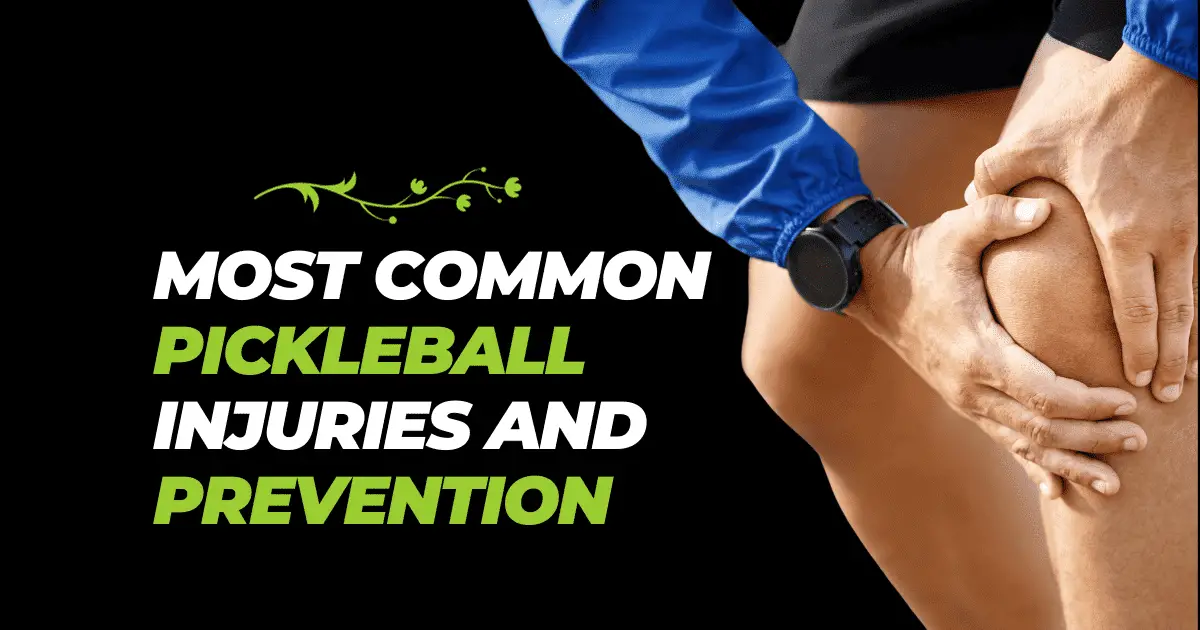
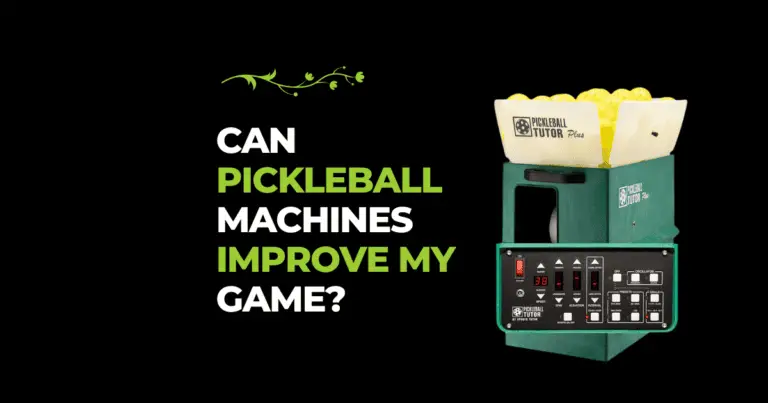
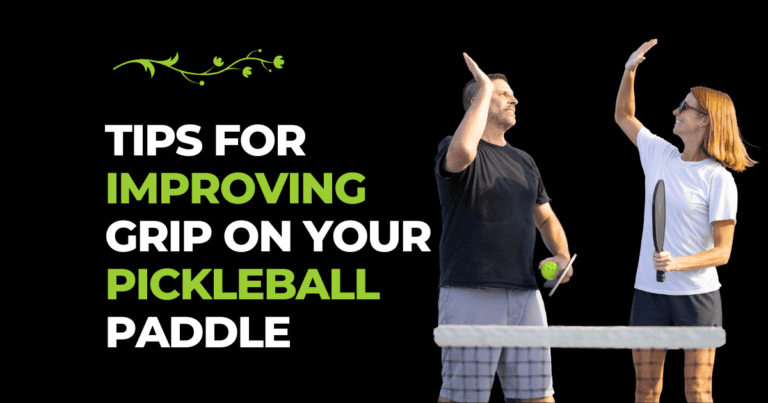
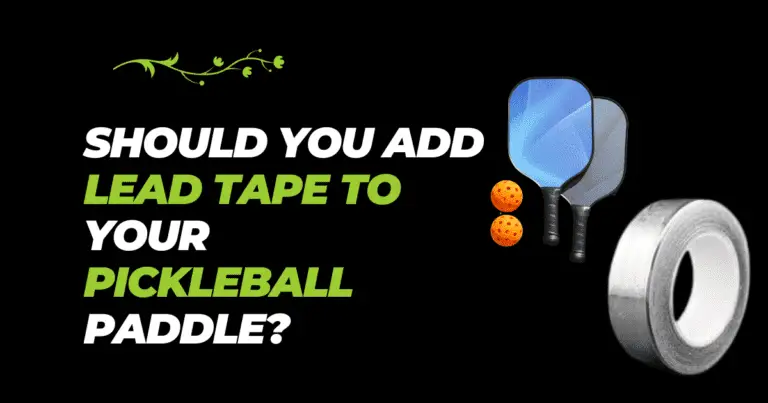

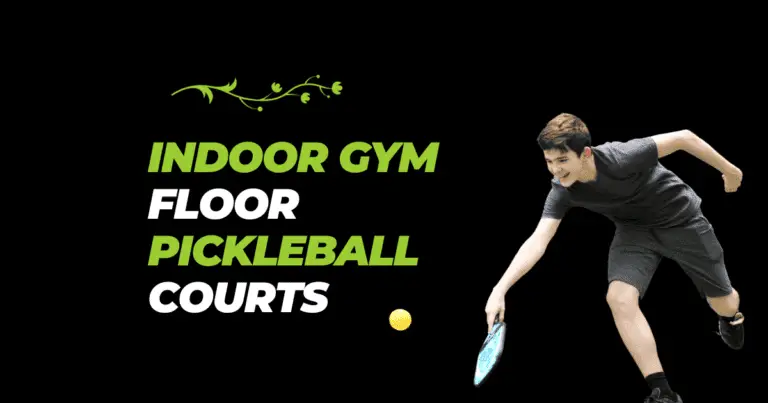

One Comment